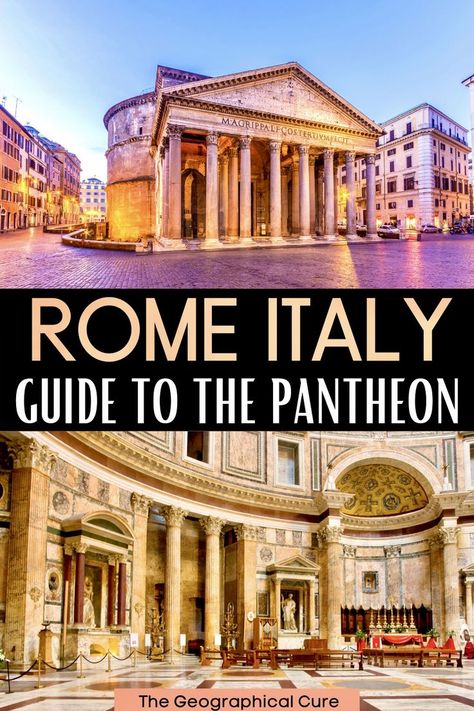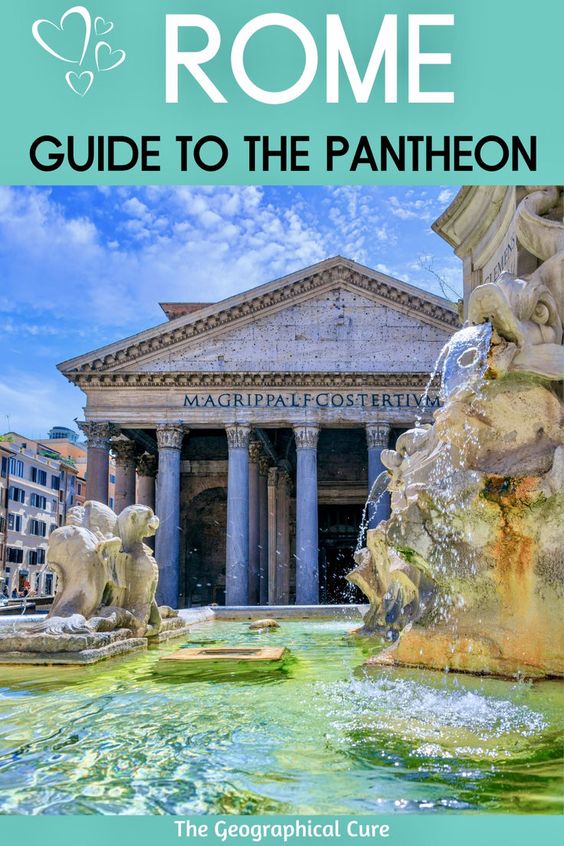Without a doubt, the Pantheon is the most famous and best preserved monument from ancient Rome. It’s the only piece of Imperial architecture left intact.
The Pantheon is a grand survivor in the Eternal City, in which time seems to collapse. The Pantheon is a microcosm of Rome, with both pagan and Christian identities spanning centuries.
The Pantheon is a breathtaking work of ancient Roman architecture and engineering, a highlight even in Rome’s overwhelming cultural stimulus package.
To walk through the portico, through the massive doors, and gaze up at the soaring dome is an almost spiritual experience.
It’s well worth a visit every time you’re in Rome. Even if it’s packed with crowds, you can still have a mystical experience.
The Pantheon used to be free to visit. But as of July 3, 2023, there is a 5 euro fee.
Perhaps the easiest way to visit is to book a ticket on Tiqets or a ticket on Get Your Guide in advance. Alternatively, to skip the line, you can book a guided tour of the Pantheon.
Here’s my guide to visiting the Pantheon, with must know tips for visiting.
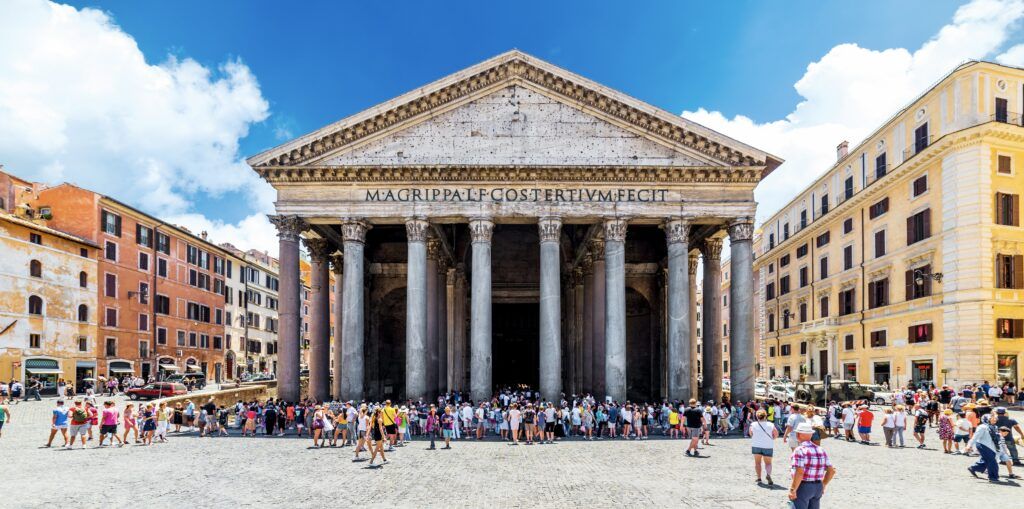
A Short History of the Pantheon
The Pantheon was originally built by Marcus Agrippa in 27 BC. Agrippa was the Emperor Augustus’ right hand man, general, admiral, and son-in-law.
With this edifice, Agrippa wanted to celebrate his (and Augustus’) victory at Actium over Antony and Cleopatra.
The Pantheon was a temple dedicated to all of the gods, all Roman deities. Agrippa’s original version was destroyed by fire in 80 AD. But his name is still emblazoned on the front.
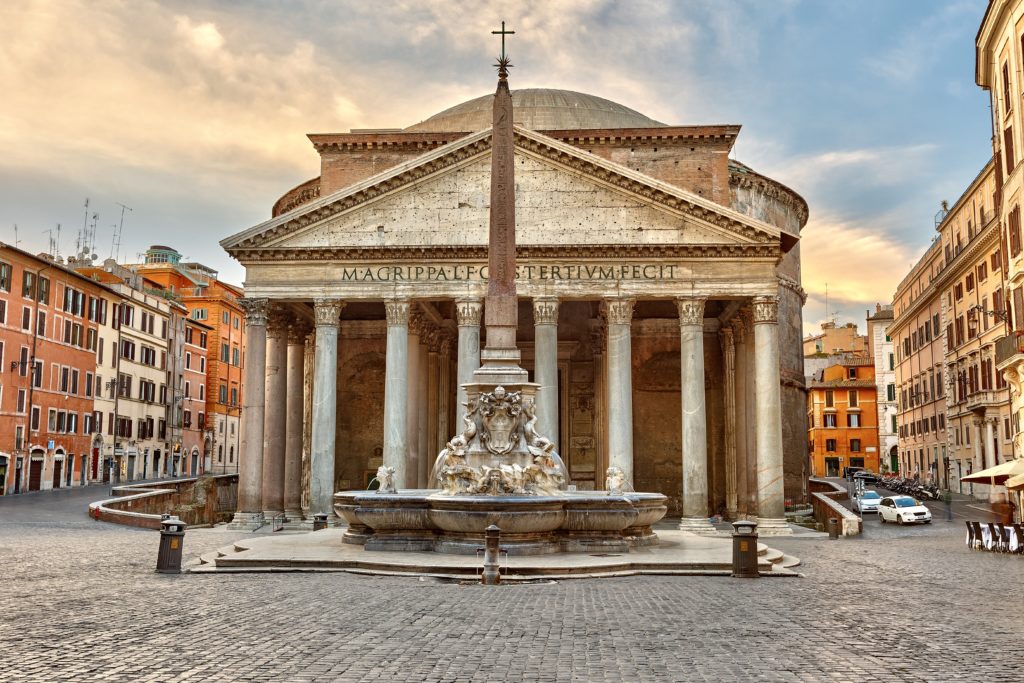
What you see today was completed in 120-128 AD, during the reign of Emperor Hadrian.
Hadrian was a well-traveled emperor, a true Grecophile. He reimagined the Pantheon as an oversized Greek temple — with 40 foot tall Corinthian granite columns from Egypt, a pediment, and portico.
Hadrian may have drawn inspiration from Nero’s Golden House, which has a striking oculus. The Pantheon was considered a masterpiece of engineering and mathematical precision.
Hadrian likely designed the Pantheon in conjunction with Apollodorus of Damascus. He was a famous Greek architect who built Hadrian’s Column and Trajan’s Forum.
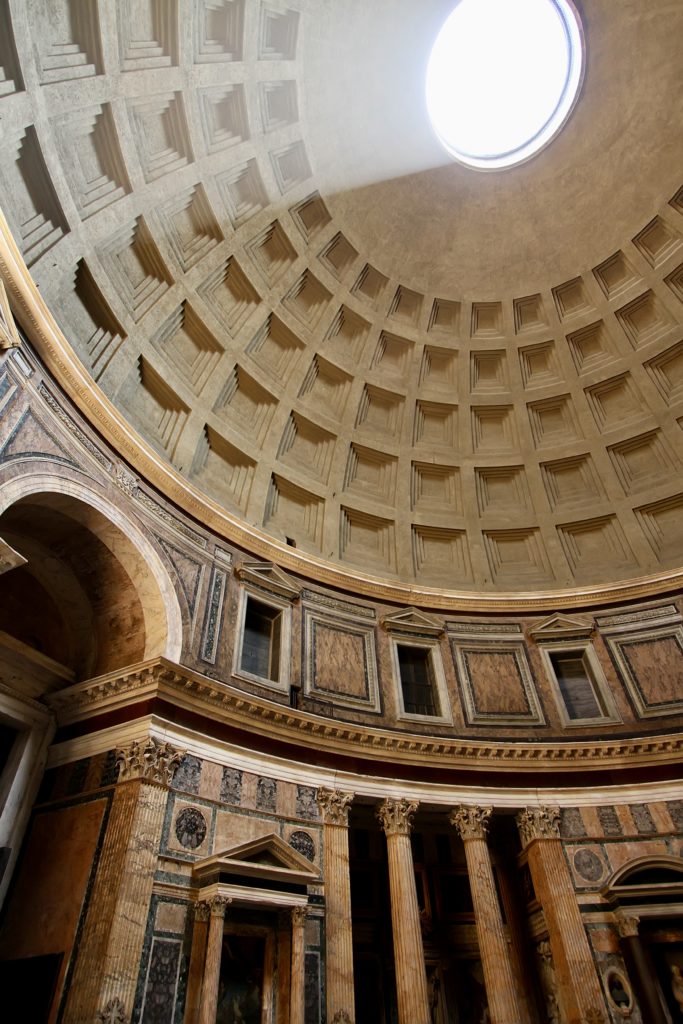
Legend holds that Hadrian later banished and executed Apollodorus. The Greek made the fatal mistake of disparaging Hadrian’s artistic and engineering ability. Hadrian was notoriously sensitive to criticism.
Originally, the Pantheon had a large rectangular courtyard in front. It was surrounded by porticos, known as a quadraporticus.
The intent was to create suspense for those entering the Pantheon. The courtyard is long gone.
What was the Pantheon used for?
It likely served as a dynastic sanctuary, an assembly hall where the public could gather. Hadrian would have “held court” on a throne to oversee the public meetings.
The Pantheon is still in fantastic shape. How did it survive so much better than other ruins in Rome?
It’s likely due to the the fact that, after the fall of Rome, Pope Boniface IV rededicated the Pantheon as a Christian church in 609. This helped save it from looting, for awhile at least.
But eventually the interior, marble, and gold were all looted in the 7th century. (The marble floor is now lovingly recreated.)
In the 17th century, two bell towers were added to the top of the Pantheon. They’re typically mis-attributed to the great sculptor and architect Gian Lorenzo Bernini.
Records show Bernini repeatedly refused to alter the Pantheon. The towers were likely installed by the architects Maderno and Borromini.
The Romans hated them and derided them as “ass’s ears.” Pope Pius IX removed them in the 19th century.
Guide To The Pantheon: What To See
Here are the must see highlights of the Pantheon.
1. Pantheon Fountain in Piazza della Rotuna
The Fontana del Pantheon was commissioned by Pope Gregory XIII. The fountain was designed by Giacomo della Porta and sculpted by Leonardo Sormani.
In 1711, Pope Clement XI commissioned the young sculptor Filippo Barigoni to radically alter the design. An ancient Egyptian obelisk, dating back to the reign of Rameses II, was installed on a plinth in the center.
The plinth was decorated with four water-spouting dolphins and the pope’s coat of arms. Barigoni also created a new base for the fountain.
In 1866, the fountain was restored. The marble figures were moved to the National Museum of Rome and replaced with copies.
2. Exterior Facade and Portico
The Panthon’s basic design is relatively simple. There’s a portico, or porch, with free standing columns attached to a domed rotunda.
The facade is imposing. Giant 23 foot tall bronze doors mark the entry way. They’re not original; they’re from the 15th century.
The original doors were painted in gold. They may have been flanked by statues of Augustus and Agrippa in alcoves.
On the portico, you’ll find a forest of sixteen columns that are 47 feet high.
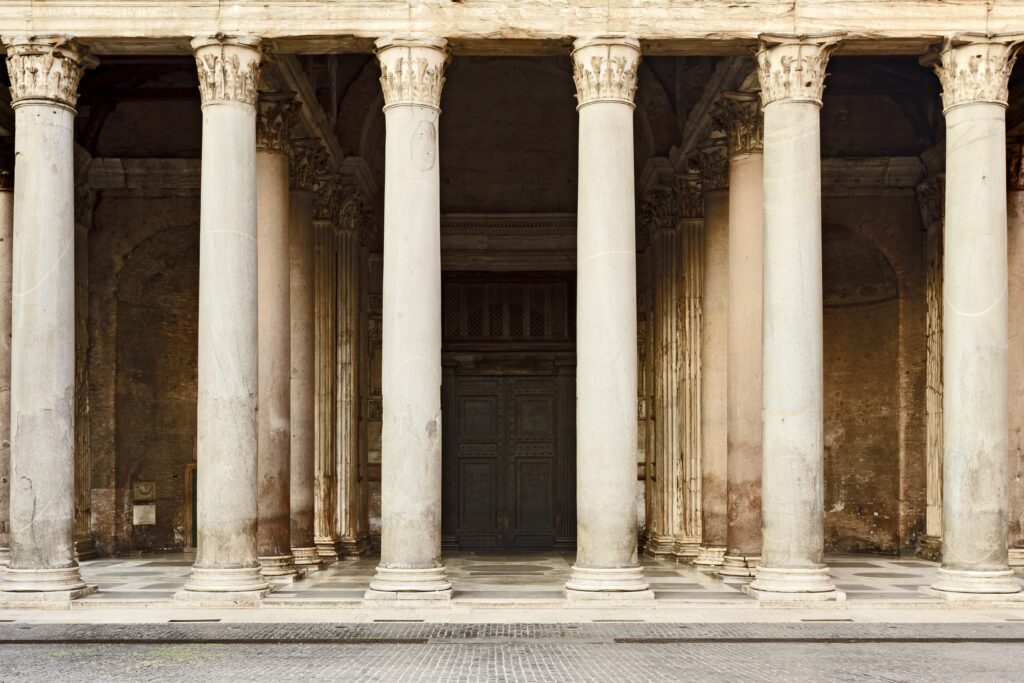
The Corinthian columns are massive and monolithic, weighing 60 tons each. It takes 3-4 people to wrap their arms around one column.
The columns were fashioned from a single shaft of red and gray Egyptian granite. Imagine the difficulty of transporting them from Egypt to Rome, schlepping them on wooden sledges and barges.
The columns hold up the triangular pediment. The pediment once contained a large bronze relief of an eagle, the symbol of Rome and the God Jupiter.
That was ripped out by Pope Urban VIII as well. You can see the holes where it once was installed.
The lower part of the pediment proclaims, in Latin “M.AGRIPPA.L.F.COS.TERTIUM.FECIT.” Translated, this means “Marcus Agrippa, three times consul made this.”
This engraving was likely a remnant left over from Agrippa’s original building. Or, Hadrian had it chisled on the building to tip his hat to Augustus.
It was likely a tactic to reinforce the the cult of Augustus. By proclaiming his connection to the Augustan regime, Hadrian was associating himself with the glory that came with it.
The exterior of the rotunda was covered in stucco, marble paneling, and perhaps even travertine. The Pantheon sits somewhat sunken into the floor. Over time, the street level has risen around the building.
The walls were once strengthened by blind brick arches to support the dome. You can see traces of the arches on the exposed brickwork.
3. Interior
The interior of the Pantheon is one of perfect harmony and symmetry. It’s spherical, 142 feet in height and diameter, with a 1:1 proportion.
You can see the Roman obsession with geometry in the circles and squares that predominate, particularly on the floor, which was restored in the 19th century. Geometry was intended to symbolize order within the Roman Empire.
The interior of the Pantheon, like many buildings in Rome, was given a Baroque facelift. So the decoration is mostly from the Baroque era.
But, ironically, the ancient Romans loved splashy, even gaudy decoration too. Many ancient Greco-Roman temples, like Athen’s Parthenon, were brightly painted and decorated with polychrome marble.
So perhaps the Pantheon doesn’t look so different than it might have in Hadrian’s time.
Niches and columns alternate on the walls. The seven niches used to hold statues of pagan gods. Those are long gone.
Now, the niches hold frescos and tombs of famous Romans and priests. The most famous pieces are the Madonna of the Girdle, The Assumption, and sculptures of St. Anne and St. Anastasio.
4. Dome | Rotunda
The Pantheon’s most emblematic feature is its perfect unsupported spherical dome, symbolizing the vault of heaven. It’s the largest unreinforced masonry dome every built.
The dome is a hemispherical coffered dome. A coffer is an ornamental sunken panel. Each coffer in the Pantheon is like a mini-dome. The coffers were originally painted blue with gold stars.
At the time, the dome was a major architectural breakthrough. How’d the Romans do it?
They invented the use of poured concrete. The concrete was made with a recipe of limestone, sand, water, and volcanic ash from Mt. Vesuvius.
The builders would create a massive wooden form or model, then pour in the concrete and let it dry.
The builders created one ring of poured concrete at a time, slowly building up the dome. Each level had an aggregate mixed in to strengthen the ring — from travertine to clay to pumice.
As they added layers, the aggregates and layers became lighter and thinner. The ceiling was also coffered. This added to the beauty of the dome, but also meant that more weight was eliminated.
When it was first built, the entire exterior of the dome, as well as the interior of the coffered ceiling, was covered in bronze. That bronze was later looted to make cannons at Castle Sant’Angelo, now Hadrian’s mausoleum.
The technology behind the Pantheon dome was lost for centuries after it was built. Domes like this weren’t build again until the early Renaissance.
The famed dome became one of the most imitated pieces of architecture in history. It became the model for Michelangelo’s dome for St. Peter’s Basilica (which was revised and completed by Carlo Maderno) and for Brunelleschi’s dome for Florence Cathedral.
The dome is actually larger than St. Peter’s dome. But you wouldn’t know it because of its flattened exterior appearance.
5. Drum
The drum is a circular band that negotiates the dome onto the actual base of the structure. It has an alternating band of rectangular relief elements and false windows with pediments.
The columns below aren’t aligned with the drum frieze, making it a separate architectural element.
6. Oculus
The most notable engineering feat was the oculus at the top. Standing in the Pantheon, the oculus appears quite small. But it’s actually 30 feet wide.
The oculus functions as what is known as a compassion ring in architectural terms, halting the pull of gravity outward.
The oculus is intended to symbolize a portal to heaven. There’s no windows in the Pantheon. The oculus is the sole source of light.
Rain and snow pour through the oculus, and are carried out by drains in the floor. It’s a beautiful sight. With its oculus, the Pantheon was connected to nature and made almost a living thing.
Historians speculate that the oculus was a sundial. The shaft of light moves throughout the interior and dome over the course of the day.
7. High Altar
Pope Clement XI remodeled the high altar and the apse. The altar was designed by Alessandro Specchi from 1700-21.
It sits exactly across from the entrance. Its arch mimics the arch at the entrance. The apse is filled with golden mosaics and crosses.
Behind the high altar is a copy of a 13th century Madonna. The niches on both sides features sculptures of St. Rasio and St. Anastasius.
8. Tombs
From the Renaissance onwards, the church became the burial place of notable Italians such as the painter Raphael, composer Arcangelo Corelli, the painter Annabelle Caracci, and the architect Baldassare Peruzzi.
There are also the tombs of two Italian Kings, Vittorio Emanuele II and Umberto I (Vittorio’s son). Vittorio’s tomb is marked by an eagle.
Raphael’s tomb is just to the left of the main altar. It’s adorned with one of his student’s sculptures, Madonna del Sasso. His bronze bust is in a niche above his grave to the left.
The tomb to the right is Raphael’s fiance, Maria Antonietta di Bibbiena, whom he likely never intended to marry.
Upon the artist’s death, bells tolled in Rome. A huge procession of mourners bearing his masterpiece The Transfiguration (now in the Vatican Pinacoteca) carried his body to the Pantheon.
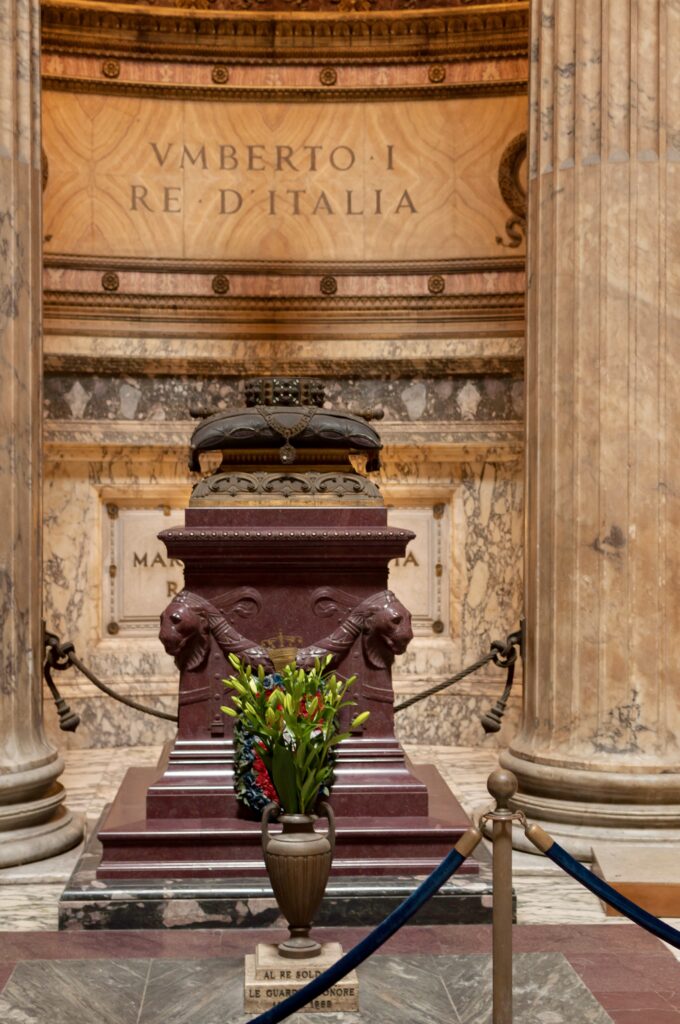
In 1878, Vittorio Emmanuel II died was buried in the Pantheon. His tomb reads Padre della Patria, which translates to Father of the Fatherland.
It’s unclear why Vittorio was allowed to be buried in the Pantheon.
The king wasn’t on good terms with Pope Pius IX, who excommunicated him and refused to acknowledge his reign. Vittorio may have opted to be buried there as a middle finger to the pope.
Practical Guide & Tips for Visiting the Pantheon
1. When To Visit The Pantheon
Be prepared for long lines to enter in high season. The line moves fairly swiftly. There are no security checks.
If you want to avoid lines, arrive at the Pantheon when it opens at 9:00 am.
2. How Long To Spend At The Pantheon
How long should you plan to spend at the Pantheon?
It really varies. You could spend 5 minutes or 60 minutes, depending on your level of interest.
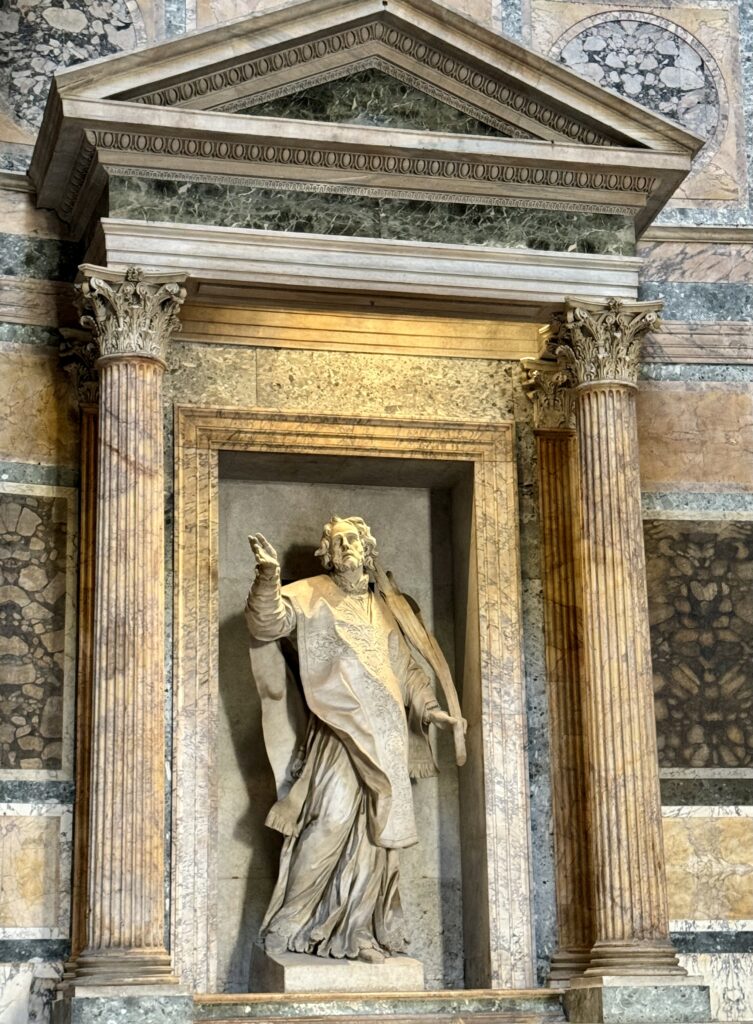
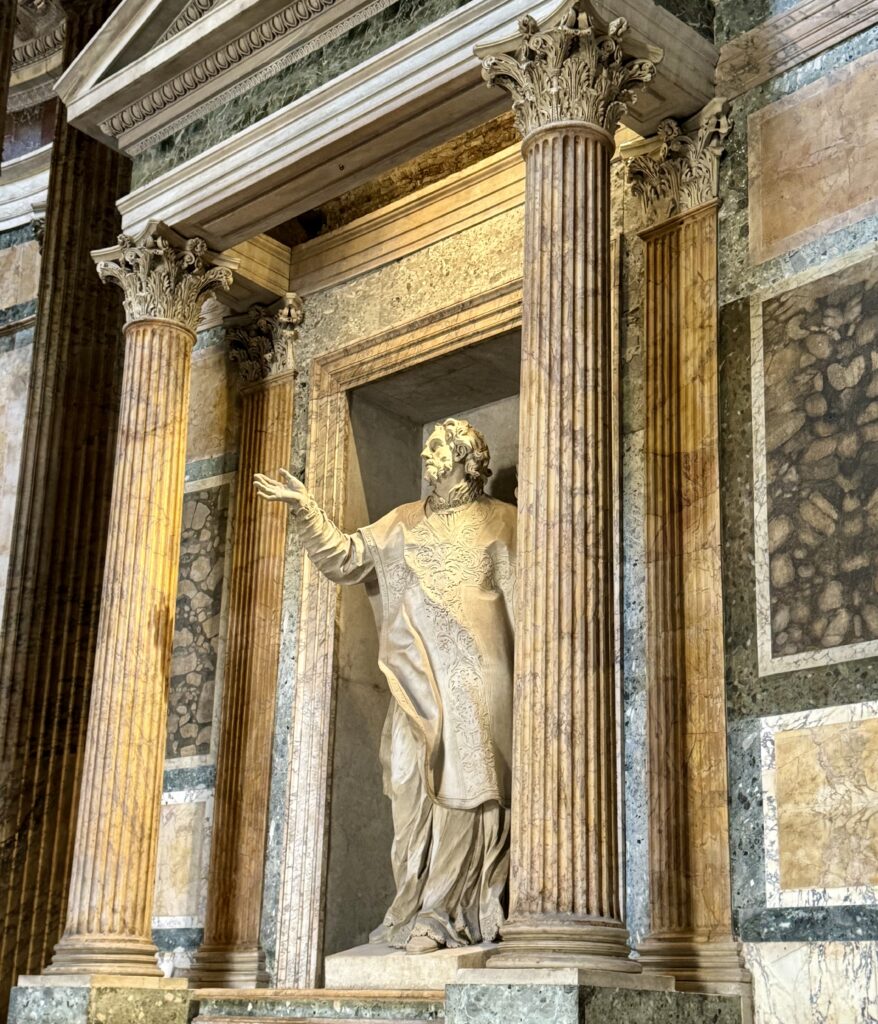
If you go on a sunny day between 11:00 am to 1:00 pm, it will be crowded, but you’ll see the beam of light come through the oculus.
3. Guided Tours Of The Pantheon
You may want to book a guided tour of the Pantheon.
This 1 hour guided tour gives you a good nutshell history. You can also book a tour with an archaeologist or a private tour.
You can also book a 2.5 hour guided tour that includes the Pantheon, Piazza Navona, and the Trevi Fountain.
You can also download an audio app for your phone.
4. How To Get To The Pantheon
The Pantheon is easy to get to. It’s located in Piazza della Rotonda, a lively square in the historic center of Rome. It’s just 2 minutes east of Piazza Navona.
By Metro: There is no metro very close to the Pantheon. The nearest metro station is Spagna, the Spanish Steps, a 15 minutes walk from the Pantheon.
By Bus: Board a bus that connects the Vatican to Termini Station (bus numbers 40, 60 and 64). Get off at Largo di Torre Argentina and walk 5 minutes.
By hop on hop off bus: If you have a hop on hop off bus ticket, the bus stops near Piazza Navona. The piazza is a 4-5 minutes walk from the Pantheon.
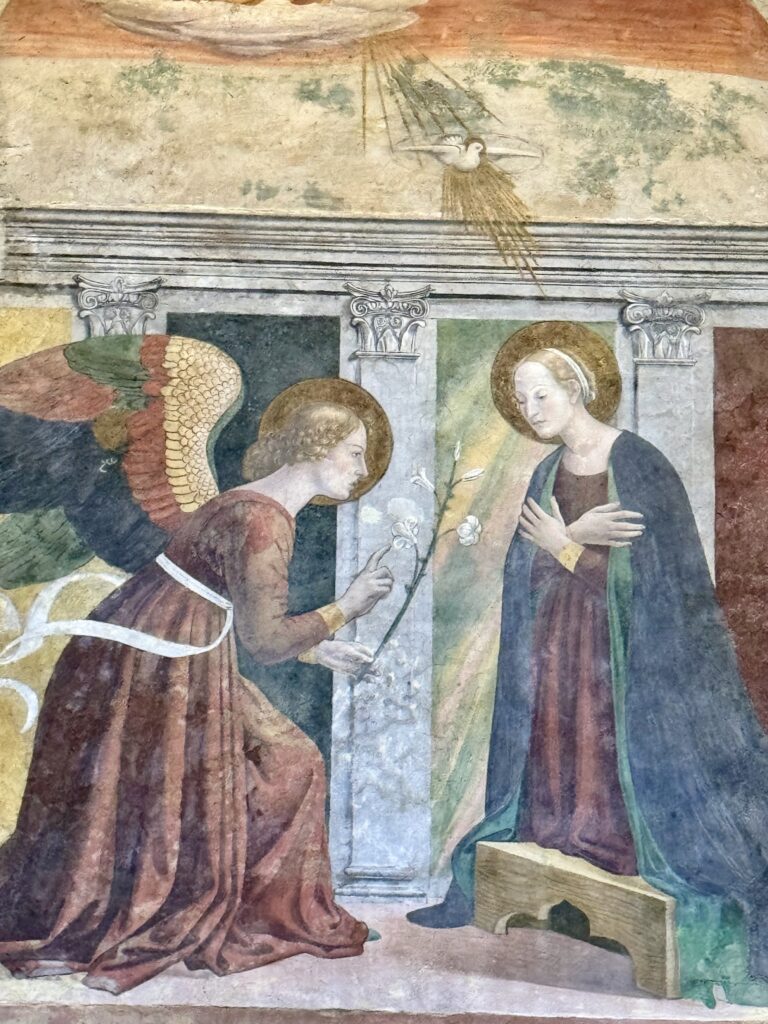
Practical Information
Address: Piazza della Rotonda
Hours: Mon to Sat 9:00 am to 7:15 pm, Sun 9:00 am to 5:45 pm
Entry fee: 5 euros. There are two lines, one for cash (one the left) and one for credit cards (on the right). The cash line is much shorter. If you pre-booked a ticket, you walk through the center.
Mass schedule: Saturday at 5:00 pm and Sunday at 10:30 am
Pro Tips: Photos are allowed inside. Tripods are not. There are signs requesting silence at all times. You can get Pantheon information booklets inside the church too.
I hope you’ve enjoyed my guide to Rome’s Pantheon. You may enjoy these other Rome travel guides and resources:
- 8 ways to spend 1 day in Rome
- 3 day itinerary for Rome
- 4 day itinerary for Rome
- 5 day itinerary for Rome
- Hidden gems in Rome
- Best museums in Rome
- Archaeological sites in Rome
- Guide to the Borghese Gallery
- Guide to Palatine Hill
- Guide to the Roman Forum
- Guide to the Colosseum
- Walking tour of central Rome
Pin it for later.

